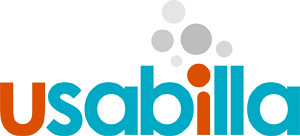"Using the Right Tool for the Job" by Martin Belam
Sunday, June 7, 2015

I wanted to tell the story of a project to redesign Guardian News & Media’s Job website, which was carried out during 2009. Guardian Jobs is one of the newspaper’s most successful digital properties. In a time of financial uncertainty, particularly in the media sector, it was important to make sure that any changes to the site improved not just usability, but also the commercial performance of the web property. I was assigned the project shortly after joining The Guardian on a full-time basis as Information Architect, and looked at it as an excellent chance to demonstrate the value user-centred design processes could bring to the business.
Strategically the project had two aims. One was simply to give the design a refresh, so that, whilst it retained its own personality, it felt more in line with the look and feel of the main guardian.co.uk site. The second was a business aim. In print The Guardian has additional daily supplements for specific sectors—“Media” on Monday, “Education” on Tuesday, and “Society”, which covers health and social issues, on Wednesday. These carry a significant amount of recruitment advertising, and we wanted to reflect those key sectors much more on the jobs site.
Guerrilla User Testing: In the early stages of the project I carried out some “guerrilla usability testing” of the existing site at the London Graduate Fair, which was held in Islington. With a long history of being involved in Graduate recruitment, The Guardian was a sponsor of the event, and Guardian Jobs also had a very central stand in the exhibition. The stand featured several laptops where people could browse the Guardian Jobs site, and also the Guardian Careers site2 where we publish information and content to help people through their working lives. To carry out the testing we replaced one of those PCs with my own MacBook. ...
Download the free UX Storytellers eBook to read the entire story.
(Image: Bill Jacobus via Flickr)


















